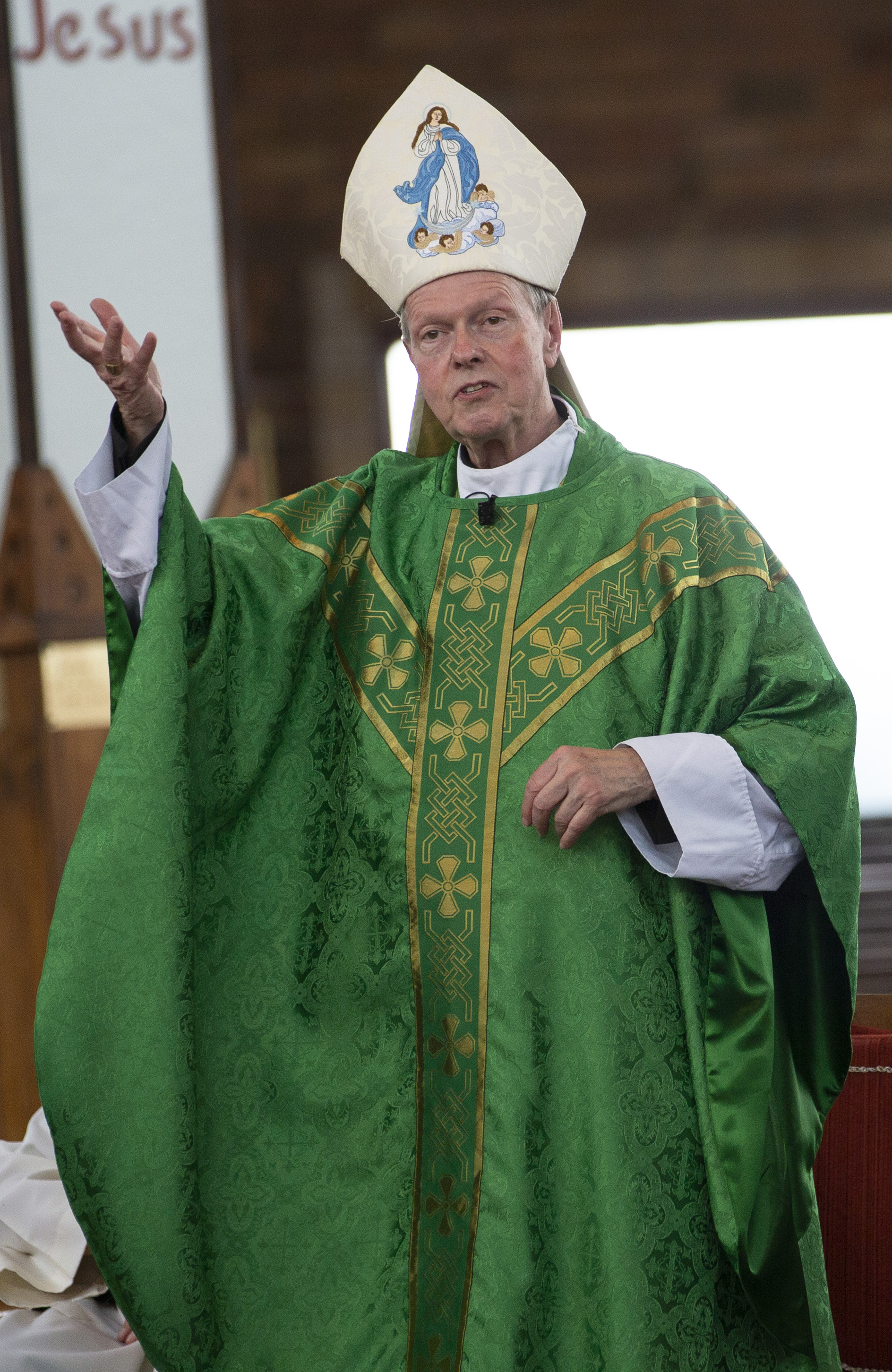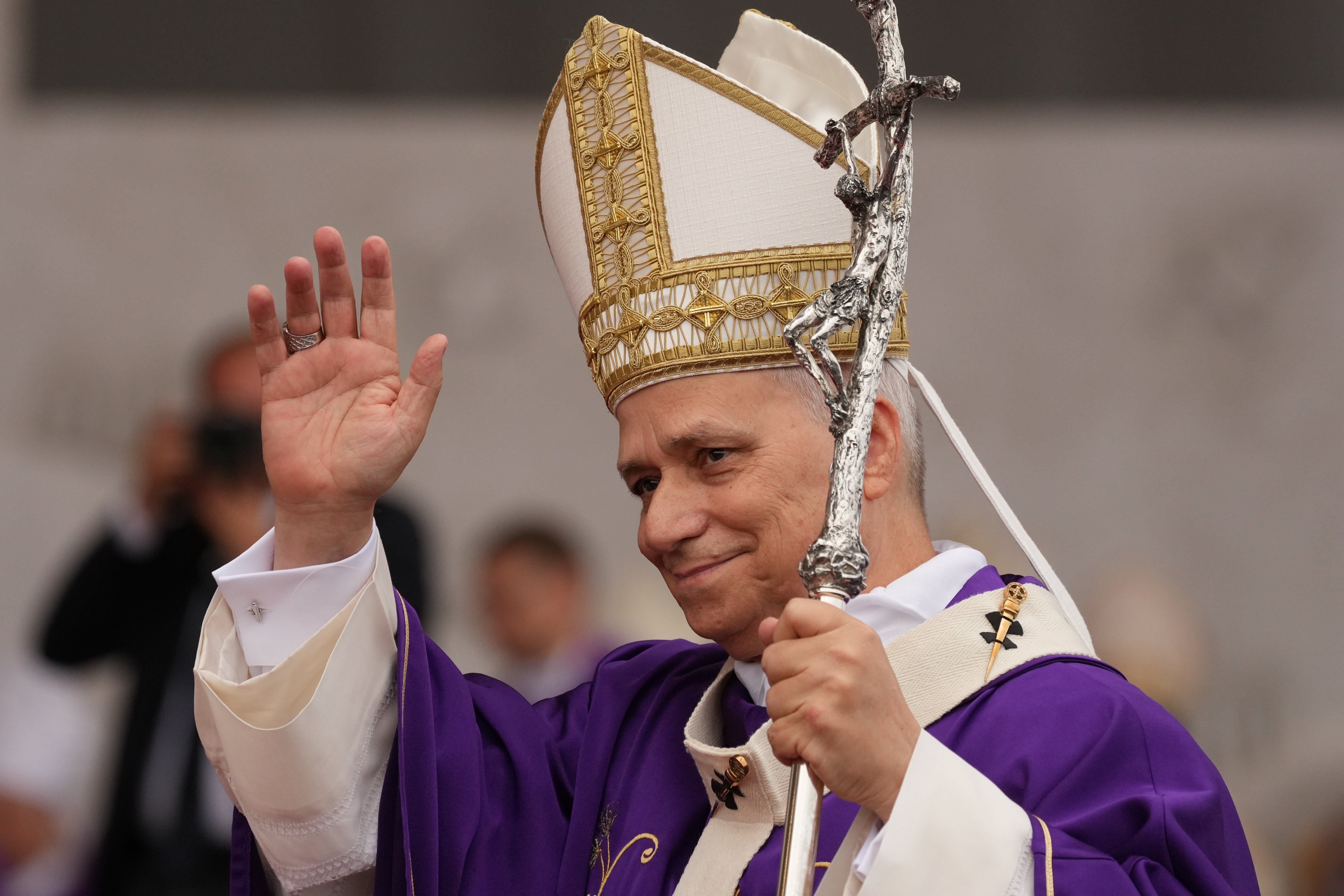January 16, 2019 at 9:21 p.m.
Since 1852, the Cathedral of the Immaculate Conception in Albany has been the “mother church” for the Albany Diocese and her people.
The Cathedral recently restored its 167-year-old colored-glass window, located on the east facade of the building, facing Eagle Street. The window repair is a part of the cathedral’s on-going building restoration project, which began in the 1990s.
The window’s restoration, which began in April 2018, was completed just a few weeks ago in December. Standing at around 40 feet in height and 20 feet in length, the window restoration was one the most extensive of the cathedral’s repairs.
“It’s a very special window,” said Thomas Prindle, coordinator for development for the cathedral and director of stewardship and development for the Albany Diocese. “It’s remarkable [the cathedral] is still here, among the south mall and the state capital.”
Also working on the project was Very Rev. David R. LeFort, vicar general for the Diocese of Albany and rector of the Cathedral of the Immaculate Conception, and Phil Galka, project manager and “clerk of the works.”
New project
Funding for the restoration was made possible through matching grants provided by the New York State Office of Parks and Recreation and Historic Preservation, and a Capital Community Assistance Grant. The diocese contributed $173,000, which was matched by the state. The end cost was approximately $370,000.
Because the cathedral’s window contains no religious imagery, the state was able to help fund the window restoration on grounds of protecting public safety, which was a risk given the window’s age and condition. “It needed a lot of work,” said Mr. Galka.
Originally, the Diocese planned to address stone work for the east façade of the building as the next phase of the building’s restoration, but “the most critical need turned out to be the window,” said Mr. Prindle.
The Diocese opted to have the window fixed in lieu of the stone work to the east façade, after the project’s architects noticed how deteriorated it had become.
“That window had the danger of literally falling out onto the street,” said Father LeFort. “Or pieces could fall and endanger people on the sidewalk.”
Inside the project
The top-half of the window is crafted from stained glass and the bottom half is made from colored glass, or “cathedral glass.” The framing for the window, which was crafted from mahogany wood, was also in great need of repair: “That tracery wood was from 1852,” said Mr. Prindle. “It had warped somewhat, but for something [almost] 168-years-old, it was pretty good.”
The top-half of the window was reinforced but not removed from the frame, while the bottom half was removed from the building and shipped to Bovard Studios, a renowned stained-glass design and restoration company in Fairfield, Iowa.
The lower window is assembled from some 1,000 pieces of colored glass — each sizing around 16 square inches — and lined with a half-inch lead border that holds the pieces together. Specialists at Bovad Studios removed and re-lined each piece of glass, or if the glass was broken and unfixable, made a new piece of colored glass in its place.
Meanwhile, the window’s wooden frame had holes or cracks filled, was reinforced with new mahogany wood, and was re-painted and sanded down to achieve the appearance of stone.
A protective glass barrier was added to shield the window from damage or yellowing, and a ventilation system was installed to ensure no moisture would be trapped. Two stone busts beside the window and portals over the front doorway were redone, and a new flight of steps and railings was installed at the front.
“It’s incredible,” said Mark Dahl, one of the architects working on the project. “I have to pinch myself sometimes because we have this amazing opportunity.”
Living history
The idea for restoring the cathedral was originally proposed by the late Bishop Edwin B. Broderick in the 1970s, but, after his retirement in 1976, fell on the shoulders of Bishop Howard J. Hubbard. A plan was later developed to fix the exterior of the church before addressing any interior issues: “The phrase was ‘securing the envelope,’” said Mr. Prindle.
In 1999, a grant was provided by the New York State Office of Parks and Recreation and Historic Preservation, which allowed for the restoration of the cathedral’s north tower and a new lead roof in place of the church’s old slate roof. In 2008, the Diocese began restoring the cathedral’s interior.
Father LeFort noted that the restoration of the cathedral is much more than just the fixing of a building; it’s the restoration of the diocesan “mother church.”
“This is where the Bishop preaches and teaches and sanctifies with the authority of a bishop,” said Father LeFort. “This cathedral is what unites the Bishop of Albany with the Bishop of Rome.”
Since its inception, Immaculate Conception has served as a symbol of unity for the people of the Albany Diocese. The cathedral was constructed under the leadership of the first Bishop of the diocese, Bishop John McCloskey, who came to Albany in 1847.
Historic St. Mary’s Church, located on Lodge Street in Albany, was Bishop McCloskey’s initial episcopal see, until he later sought to create something more suitable for his people.
Bishop McCloskey “realized that so much of the population in 1847 was immigrant labor, and those immigrant laborers couldn’t speak the language, didn’t know the culture, [and had] no real assimilation,” said Father LeFort. “His goal was to be shepherd to the exiles...So here, wherever they came from, however they came, whoever they were, [they] were always welcome here. This was a place of welcome and unity, where they would find support, encouragement, strength, formation.”
Restoring the cathedral also allows Bishop Edward B. Scharfenberger to continue to provide that same help and healing to his people.
“The bishop needs to provide a spiritual home and haven for all of those who are in need,” said Father LeFort. “And that’s his strong desire, even today.”
To schedule a tour of the Cathedral of the Immaculate Conception, call 518-463-4447 or email [email protected]. For additional information on scheduling a tour, visit http://cathedralic.com/tour/.
- California bishops celebrate ‘very powerful’ Mass in ICE facility for detainees
- Bishop: New Bible translation shows ‘God never changes, but always has something new for us’
- Tennessee faith leaders urge governor to stop all executions
- Amid ‘fragile’ ceasefire, Caritas Jerusalem seeks to ‘replant hope’ in Gaza this Christmas
- Full text: Pope Leo XIV’s Dec. 17, 2025 general audience
- Pope, Israeli president speak by phone about Sydney attack, peace in Gaza
- ‘Make more use of Newman,’ say British church experts
- Rather than chasing productivity, turn to God to resolve restlessness, pope says
- Pope Leo names Bishop Ramón Bejarano to lead Diocese of Monterey
- Honor is ‘bigger than me,’ Heisman winner, a Catholic, says in emotional acceptance speech








Comments:
You must login to comment.